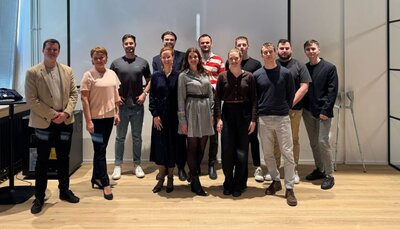
Research center of user experience and interaction UXI@FIIT
Faculty of Informatics and Information Technologies
Institute: Institute of Informatics and Software Engineering
Contact person: Ing. Jakub Šimko, PhD.
Contact: +421 2 2102 2443
e-mail: jakub.simko@stuba.sk
web: ux.fiit.stuba.sk
Description:
The User eXperience Laboratory is dedicated to research of user experience (UX) in web applications, user interactions with PCs, tablets, smartphones, and other multimedia devices. The laboratory is equipped with high-performance sensors for detailed observations of human subjects interacting with computer devices: emotion recognition, eye gaze tracking, physiological sensors (EEG, body temperature, galvanic skin response, breathing rate, etc.), mouse movements, keyboard usage, and face recognition. The laboratory is currently under construction as part of University Science Park project.
Projects:
- Analysis of user feedback in web applications – In the project, we focus on learnability and ergonomics of use of user interfaces in selected domains (internet banking, ordering systems of telecom operators)
- Processing eye tracking data with neural networks – In this project, large and loosely structured volumes of data streaming from sensors of implicit feedback are processed by neural networks, which have the task of detecting patterns in the streams. Using this approach, it is possible to effectively detect unexpected problems in application usability.
- Dynamic regions of interest on the web – The project is focused on creation of a technology for conducting easy collection of implicit feedback on dynamic web pages (e.g. pages that often change their appearance during a single session). Execution of user studies on such pages in standard conditions is burdensome, as it requires manual resizing and repositioning of areas of interest in eye tracking analytical tools. In this project, we bypass the problem by translation of raw gaze coordinates to logical components of the web pages – the DOM objects.
- Automatic measurement of application learnability – Here, methods for automated evaluation of learnability for computer games are developed. We add an extra source of information to traditional playtesting – the eye tracking. The eye tracking is not invasive and can assess the player’s behavior in more detail. The method compares expected interaction scenarios defined by game designer and compares them to real playtest session data, acquired by eye tracker.
Photos:

Laboratory for detailed research of user experience uses 300 Hz eye tracker Tobii TX300, depth camera and physiological sensors.

Physiological sensors for monitoring of synaptic potential of neurons (EEG), skin galvanic response and pressure sensors.

A running experiment in the laboratory for detailed research of user experience.

The laboratory for research of user experience for mobile applications, TV and multimedia.

A running experiment in laboratory for research of user experience for mobile applications, TV and multimedia.



